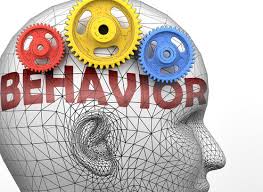-

Fagan's Second-Grade Behavior Plan Room. 203
1. Introduction Fagan is a second-grade student who has shown great potential but sometimes struggles with [specific behaviors or challenges, e.g., staying on task and following directions]. This behavior plan aims to support Fagan in developing positive behaviors and improving his classroom experience.
2. Goals and Objectives
- Goal 1: Improve Fagan's ability to stay on task during independent work.
- Objective: Fagan will work independently for at least 15 minutes with minimal reminders.
- Goal 2: Enhance Fagan's ability to follow directions.
- Objective: Fagan will follow 3-step instructions with at least 80% accuracy.
3. Positive Reinforcement
- Behavioral Rewards: Fagan will earn [specific rewards, e.g., stickers, extra recess time, or small toys] for demonstrating positive behaviors such as staying on task, following directions, and showing respect.
- Immediate Praise: Offer verbal praise and encouragement immediately when Fagan exhibits positive behavior.
- Behavior Chart: Create a visual chart where Fagan can track his progress and earn rewards for achieving set goals.
4. Behavioral Interventions
- Visual Aids: Visual schedules and checklists help Fagan understand and remember tasks and expectations.
- Breaks: Allow Fagan short, scheduled breaks to help him refocus and manage energy levels.
- Clear Instructions: Provide clear, simple instructions and check for understanding by asking Fagan to repeat the instructions.
5. Classroom Environment
- Seating Arrangement: Position Fagan near the teacher or a peer role model to minimize distractions and provide additional support.
- Quiet Space: Designate a quiet area in the classroom where Fagan can go if he needs to calm down or refocus.
6. Communication with Parents/Guardians
- Regular Updates: Send home a weekly behavior report to keep parents/guardians informed about Fagan's progress and any issues that arise.
- Parent-Teacher Meetings: Schedule regular meetings to discuss Fagan’s behavior, progress, and any adjustments needed to the behavior plan.
7. Consequences for Negative Behavior
- Consistent Responses: Implement consistent and fair consequences for behavior that does not meet expectations, such as a brief time-out or loss of a privilege.
- Problem-Solving: Work with Fagan to identify the cause of the behavior and develop strategies to address it.
8. Review and Adjustments
- Regular Review: Evaluate Fagan’s progress bi-weekly and adjust the behavior plan as necessary based on his performance and feedback from both the student and his parents/guardians.
- Flexibility: Be open to modifying strategies and goals as Fagan’s needs and progress evolve.
9. Support and Resources
- Additional Support: Collaborate with the school counselor or a behavioral specialist to provide additional strategies and support.
- Parental Involvement: Encourage parents to reinforce positive behaviors at home and work with them to ensure consistency between home and school.
- When a student has not cooperated and has disrupted the class, the following steps are taken based on the severity of the disruption (At teachers’ discretion):
- 1. Conference with the student
- 2. Document the behavior.
- 3. Move to the Think Time Area and complete the Think Time form. If the behavior continues,
- 4. Contact the parents, send home notice of the behavior, and have the parents sign it.
5. Time out in another classroom
6. Student behavioral intervention plans
If the student’s behavior is central (ex., fighting, defiance, or aggression),
The following steps are taken:
Step 1: Referral to Administration
. Step 2: Home contact made by Administration.
Step 3: Meeting with parents.
Step 4: In/Out of School Suspension.
Step 5: Written apology to offended parties before the student is permitted to return to schoolSignatures:
Teacher: ______________________
Parent/Guardian: ______________________
Student (if appropriate): ______________________
Date: ______________________
Select a School...
Select a School
- A. R. Johnson
- Academy of Richmond County
- Richmond Hill Elementary School
- Barton Chapel Elementary School
- Bayvale Elementary School
- Belair Elementary school
- Blythe Elementary School
- Butler High School
- C.T. Walker Traditional Magnet
- Copeland Elementary School
- Cross Creek High School
- Cyber Academy of Excellence
- Davidson Fine Arts
- Deer Chase Elementary School
- Diamond Lakes Elementary School
- Freedom Park School
- Garrett Elementary School
- Glenn Hills Elementary School
- Glenn Hills High School
- Glenn Hills Middle School
- Goshen Elementary School
- Gracewood Elementary School
- A. Dorothy Hains Elementary School
- Hephzibah Elementary School
- Hephzibah High School
- Hephzibah Middle School
- Jenkins White Elementary School
- Jamestown Elementary School
- Lake Forest Hills Elementary School
- Lamar-Milledge Elementary School
- Lucy C. Laney High School
- McBean Elementary School
- Meadowbrook Elementary School
- Monte Sano Elementary School
- Alternative School at Morgan Road
- Murphey Middle School
- Performance Learning Center
- Pine Hill Middle School
- Richmond County Technical Career Magnet School
- eSchool
- Richmond Hill Middle School
- W.S. Hornsby Middle School
- Sue Reynolds Elementary School
- T.W. Josey High School
- Tobacco Road Elementary School
- Tutt Middle School
- W. S. Hornsby Elementary School
- Warren Road Elementary School
- Westside High School
- Wheeless Road Elementary School
- Wilkinson Gardens Elementary School
- Belair Middle School
- Marion E. Barnes Career Center
- Reaching Potential Through Manufacturing (RPM)



